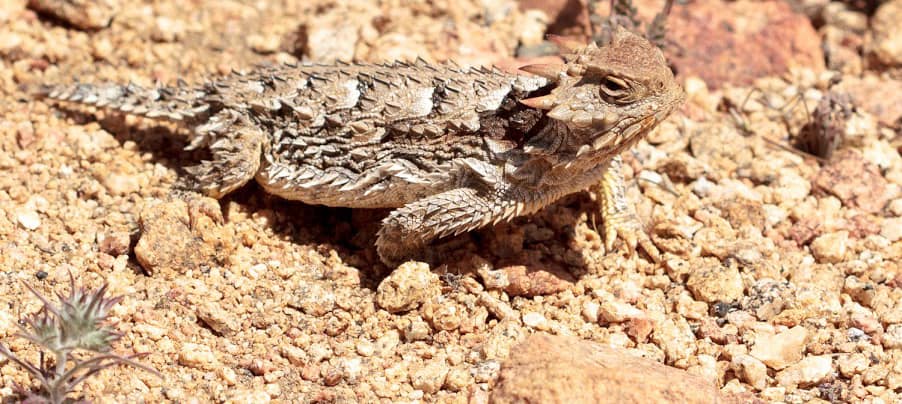Share this article
Joshua Tree lizards have moved to higher elevations
As the climate has warmed over the past few decades, lizard species in Joshua Tree National Park are shifting to higher elevations.
“Reptiles have been considered to be really good candidates to look at effects of climate change,” said Cameron Barrows, an associate research ecologist for the University of California Riverside and lead author on the recent study published in Biological Conservation on the Joshua tree lizards. “They can’t move very far anyway, and being an ectotherm, they should be very sensitive to changes in temperature.”
Barrows had already studied how climate change may be impacting the Joshua trees that the park is known for. “But in addition to vegetation, I am also very much interested in how animals, and specifically lizards, might be responding to climate change,” he said.
Barrows had already been collecting a bit of data on where lizards were occurring throughout the park in the last six to seven years, but they didn’t have historical data to extrapolate how climate may have impacted the different species. But Barrows said historical data on the lizards was kind of a serendipitous occurrence.
Barrows had made friends with colleagues at Long Beach State, where he had gotten his master’s degree. Those colleagues had been cleaning the basements of university buildings when they found a box of data cards. They opened it up and realized the data included lots of information on reptiles and other vertebrates. They emailed Barrows and asked if he was interested. “I said yes,” Barrows said.
He soon found that the data was from a study looking at parasites on vertebrates from 1958 to 1972. Parasites aside, the data specified where lizards were found in the park and what species they were. “It was amazing to have that kind of data,” he said. “It’s extremely rare to have those sorts of comparisons and be able to show that in the years between the 1960s to now in 2020, virtually every species of lizard had been moving upslope.”
Barrows and his colleagues surveyed modern lizard species throughout the park using GPS units to determine where they were occurring. They then determined where the areas they were studying overlapped with the historical data in order to make comparisons.
Just like now, the park was experiencing a long-term drought in the earlier study period, Barrows said. “We were comparing apples to apples — drought to drought.”
Comparing temperatures, they found the park is on average 3 degrees Celsius warmer more than it was back then. “Because of increased temperatures, it deepens the drought and makes it a much more arid situation,” he said.
Barrows and his colleagues determined that due to climate change, many lizard species, including the desert horned lizard (Phrynosoma platyrhinos), western whiptail (Aspidoscelis tigris) and zebra-tailed lizard (Callisaurus draconoides), now occupy higher elevations that they hadn’t been found in historically. Several shifted were at elevations more than 10% higher. Only the western fence lizard (Sceloporus occidentalis) didn’t move upslope.
While lizards were still found at lower elevations, Barrows said, these higher areas could serve as climate refugia — areas buffered from the worst of climate change, offering slightly cooler temperatures and more rain. In these areas, lizards reproduce better and are doing better overall in the face of drought, he said.
Barrows suggests that park managers keep these areas in mind. They may want to avoid placing campgrounds, roads or solar plants in this higher terrain, he said, and they can keep an eye out for invasive species that could alter the landscape.
“As a manager you now there’s a special area that has the best chance of protecting plants and animals for the short term,” he said. “That’s where you put your time and energy by adding additional management there.”
Header Image: Desert horned lizards are one of the species expanding to higher elevations in Joshua Tree National Park. Credit: Cameron Barrows








